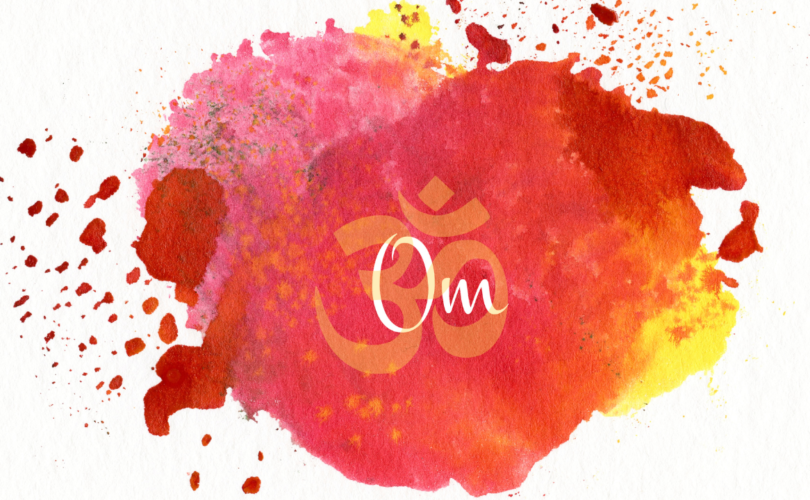The Science of Spirituality Series: On Mantras
In March we welcomed Spring Equinox.
Spring Equinox brings the emotions of equanimity to Earth as the sun rotates around the Sun. We are in a season of balance in lightness and darkness, which affects our ability to bring balance to the hemispheres of our energetic body and our brain.
During this season the Northern Hemisphere enters Spring – a rebirth, awakening. Meanwhile, the Southern Hemisphere welcomes Fall – a season of withdrawing and slowing down. Both seasons bring balance, reflecting a time of shifts for beginnings and endings.
Equinox enables us to make meaningful shifts.
During this shift, we get a chance to consciously tune in to reflect on our role in our life and assess how we can bring more balance to our life.
As you tune in, become aware of the power you have to plant the seeds to manifest the future you.
Believe this FUTURE YOU is already unfolding. These shifts can be subtle, such as SHIFTING our mindset or old patterns of thinking.
My daily rituals include practicing Mantras, which serve as a powerful technique to make meaningful SHIFTS.
What SHIFTS are you ready to make, and how will you make those shifts?
The Power of Mantras
Mantras have their roots in Hindu traditions and are considered an important part of spiritual practice. Mantras have been used for centuries in various cultures and traditions as a means of promoting relaxation, focus, and spiritual growth.
From a scientific perspective, research has shown that mantras can have measurable SHIFTS on the brain and body.
For example, studies have found that the repetition of mantras can activate the parasympathetic nervous system, which is responsible for regulating rest and relaxation. This can lead to a decrease in heart rate and blood pressure, as well as a reduction in stress and anxiety.
In addition, research has shown that the repetition of Mantras can stimulate the release of neurotransmitters such as dopamine and serotonin, which are associated with feelings of pleasure and well-being. This can lead to an improved mood and an increased sense of happiness.
For me, Mantras represent an instrument for my mind to protect it from itself. As many of us are aware our psychological mind can hurt us, telling us stories that can send us into looping repetitive thinking. Have you ever been down that rabbit hole? And Mantras allow my mind to place attention on positive vibrations while remaining in the present moment.
There is also evidence to suggest that the repetition of Mantras can have a positive effect on the immune system, by increasing the production of antibodies and other immune cells. This can help to protect the body against illness and disease.
Overall, while the benefits of Mantras are rooted in Hindu traditions, scientific research has provided evidence to support their use in promoting physical and emotional well-being. By incorporating mantras into our daily practice, we can harness their power to cultivate inner peace, focus, and spiritual growth.
The repetition of Mantras is believed to have a powerful effect on the brain and cognitive functioning.

The Importance of Mantra Repetition
Mantras are essential for prolonged repetitive verbal utterances.
When we repeat a Mantra, the sound vibrations that are created have a calming effect on the brain. This can help to reduce stress and anxiety and promote a sense of inner peace and relaxation. In addition, the repetition of mantras can help to improve our focus and concentration, as it requires us to maintain our attention on the sound and rhythm of the Mantra.
From a neurological perspective, the repetition of mantras can also help to reprogram old patterns of thinking and behavior. This is because the brain has a remarkable ability to change and adapt, a phenomenon known as neuroplasticity. By repeating a Mantra, we can create new neural pathways in the brain that can help us to break free from old thought patterns and develop new, healthier ways of thinking and behaving.
Research has also shown that the repetition of Mantras can have a positive impact on the brain’s reward system, which is responsible for regulating our emotions and motivation. This can lead to an increased sense of well-being and happiness.
Overall, the repetition of mantras can have a powerful effect on our cognitive functioning, promoting relaxation, focus, and the development of new, healthier ways of thinking and behaving.
These utterances when spoken in Sanskrit hold specific vibrations that invoke shifts in our consciousness and affect our emotions and cognitive or neural pathways.
Sanskrit Mantras
The Sanskrit language is known for its unique sounds and pronunciation, which are believed to have a powerful effect on the body, mind, and spirit. Each Sanskrit sound, or “phoneme,” is associated with a specific vibration, and the combination of these sounds in a mantra is thought to create a unique energetic signature that can influence our inner state.
In Sanskrit, the sounds are referred to as “varnas,” which means “colors” or “letters.” Each varna is believed to represent a particular aspect of the divine or the natural world, and the combination of varnas in a Mantra is said to create a powerful resonance that can help us to connect with these energies.
For example, the Sanskrit sound “OM” is considered one of the most powerful mantras, and is believed to represent the primordial sound of or the essence of the universe. The sound of “OM” is made up of three varnas – “A,” “U,” and “M” – which are said to correspond to the states of waking, dreaming, and deep sleep. The repetition of “OM” is thought to help us to connect with our innermost self, and to transcend the limitations of our physical existence.
Similarly, the repetition of other Sanskrit mantras, such as “Shanti,” which means “peace,” or “Gayatri,” which is a prayer for enlightenment, can help to create a specific energetic vibration that can influence our thoughts, emotions, and actions.
Overall, the Sanskrit sounds that produce a mantra are believed to hold specific meaning and vibration, and the repetition of these sounds can help us to connect with the divine, cultivate inner peace, and promote spiritual growth.

OM Mantra
Per Hindu scriptures, Goddess Lakshmi is revered as the energy that resides in every woman throughout her life. By focusing on Goddess Lakshmi through specific mantras you can manifest abundance, particularly during this Spring Equinox season which reflects new beginnings.
One of my daily rituals includes chanting the Mantra OM.
OM is a sacred vibration that has deep roots in Hindu traditions. This primordial sound that emanates throughout the universe reflects our highest state of consciousness.
Growing up in a devout Hindu family it was not uncommon to chant mantras that were infused with the sacred sound of OM. Meditating on OM involves repeating this sound with a focus on tuning into these sensations created through its vibration.
Each time I tuned into the vibration of the OM mantra I feel a SHIFT in my state of being and a feeling of deep peace.
The Science of the OM Mantra
Research-backed studies show that mental repetition of chanting the mantra OM has benefits on the brain as well as overall emotional and physiological conditions.
The OM mantra has been found to have a significant effect on neuroplasticity, which is the brain’s ability to change and adapt in response to new experiences and stimuli. When we repeat the OM mantra, the sound vibrations that are created have a measurable effect on the brain, which can lead to changes in brain structure and function.
Studies have shown that the repetition of the OM mantra can increase the activity in the prefrontal cortex, which is the part of the brain responsible for attention, decision-making, and self-control. This increased activity in the prefrontal cortex is thought to improve cognitive function and executive control, which can help us to regulate our emotions, manage stress, and improve our overall well-being.
In addition, research has shown that the repetition of the OM mantra can increase the production of gray matter in the brain. Gray matter is part of the brain that contains the cell bodies of neurons, and an increase in gray matter is associated with improved cognitive function and emotional regulation.
Furthermore, the repetition of the OM mantra has been found to increase the connectivity between different regions of the brain, which can help to improve communication and coordination between different parts of the brain. This increased connectivity is thought to support cognitive flexibility, creativity, and problem-solving abilities.
Overall, the repetition of the OM mantra has a measurable effect on neuroplasticity, leading to changes in brain structure and function that can support cognitive, emotional, and spiritual growth. By incorporating the OM mantra into our daily practice, we can harness its power to cultivate inner peace, focus, and self-awareness.
Overall Benefits of the OM Mantra
Below are a few key benefits of chanting the OM mantra:
- Improves sense of connection: The OM sound vibrates at the frequency of 432 Hz, which is the same vibrational frequency of nature. So by chanting it we increase our connection to the collective consciousness.
- Calms the nervous system: Low-frequency chanting of OM increases the gamma waves in the brain which induces the “feeling of bliss”. When we are in a state of anxiety that means that our sympathetic nervous system is dominant.
- Regulates our hormones creating a sense of well-being: Low frequency of OM chanting decreases our cortisol levels which can reduce blood pressure, anxiety, and depression. OM chanting also generates the hormones dopamine, oxytocin, serotonin, and endorphins which regulate the “fight or flight” response system and it regulates state anxiety as well as trait anxiety. OM chanting brings our parasympathetic nervous system that induces relaxation and healing to come into dominance.
- Activates relaxation through the vagus nerve: Our vagus nerve is the longest nerve running from the brain through the body. This nerve helps induce calmness emotionally and physically. Deep diaphragmatic breathing combined with OM chanting can activate the vagus nerve into relaxation.
- Activates the prefrontal cortex to increase focus: Specific forms of OM chanting quantitatively demonstrate an activation in the prefrontal part of the brain responsible for creativity, cognitive behavior, and moderation of social behavior.
Ways to Practice Mantras
Our mind produces thousands of thoughts, and mantras serve as an antidote to all of those thoughts occupying our mind.
- You don’t have to be aligned with a specific faith or any religion.
- Mantras can be practiced anywhere; Per Dalialama even while washing dishes.
- The repetition of the Mantra is key, so that is why using a prop such as a mala (101 beads) helps you stay FOCUSED.
Consider practicing a minimum of 12 minutes of meditation that includes the practice of chanting OM. Below is a video that you can listen to establish your OM chanting practice.








